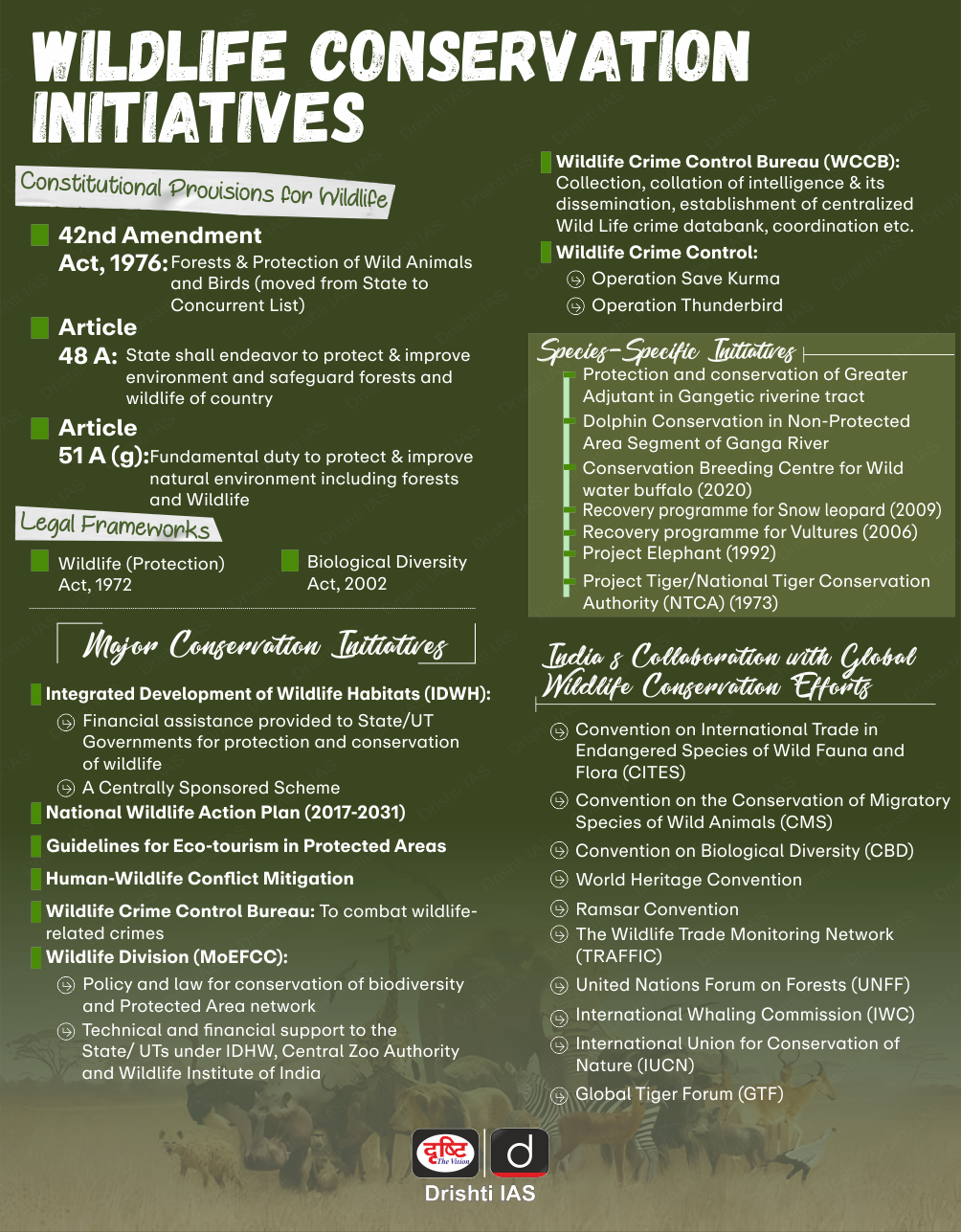Important Facts For Prelims
NTCA’s Plan on Relocation of Villages
- 12 Jul 2024
- 4 min read
Why in News?
Recently, the National Tiger Conservation Authority (NTCA) has urged state wildlife departments to develop a comprehensive timeline and action plan for the relocation of villages situated within the core tiger habitats.
What is NTCA's Villages Relocation Plan?
- About Core Areas:
- Wildlife Protection (Amendment) Act, 2006 emphasises the need for undisturbed areas to support viable tiger breeding populations.
- Core or critical tiger habitats refer to areas within tiger reserves that are kept untouched to ensure the survival of breeding tiger populations.
- The NTCA's focus is on the 55 notified tiger reserves in India, where approximately 600 villages (64,801 families) currently reside within core tiger habitats.
- Wildlife Protection (Amendment) Act, 2006 emphasises the need for undisturbed areas to support viable tiger breeding populations.
- Voluntary Village Relocation Program (VVRP):
- Voluntary Village Relocation Program (VVRP) has twin objectives of empowering the local communities by giving access to development opportunities and creating inviolate space for tigers so that both can co-occur in harmony.
- Relocations must be voluntary and based on the informed consent of gram sabhas and families involved and Forest rights of Scheduled Tribes and other forest dwellers must be recognised and settled.
- Compensation: Families can choose between financial compensation (Rs 15 lakh per family) or a resettlement package (including land, housing, and basic amenities).
- Issues With Relocation Plan: The NTCA's relocation package falls short of the legal standards set by the Land Acquisition Act, 2013.
- NTCA does not comply with the legal requirement of the Land Acquisition Act, 2013, which has special provisions to provide resettlement and rehabilitation to ST communities and forest dwellers.
- Voluntary Village Relocation Program (VVRP) has twin objectives of empowering the local communities by giving access to development opportunities and creating inviolate space for tigers so that both can co-occur in harmony.
Project Tiger
- Project Tiger is a wildlife conservation initiative in India that was launched in 1973.
- The primary objective of Project Tiger is to ensure the survival and maintenance of the tiger population in their natural habitats by creating dedicated Tiger Reserves.
- Starting with only nine reserves, the project marked a paradigm shift in wildlife conservation efforts. By 2024, it had grown to 55 reserves in different states, totalling 2.38% of India's land area.
- The unreliable pug-mark method of the first tiger census in 1972 gave way to more accurate techniques like the camera-trap method.
Read more: Wildlife Protection Act, 1972, Forest Rights Act, National Tiger Conservation Authority
UPSC Civil Services Examination, Previous Year Question (PYQ)
Prelims
Q1. At the national level, which ministry is the nodal agency to ensure effective implementation of the Scheduled Tribes and Other Traditional Forest Dwellers (Recognition of Forest Rights) Act, 2006? (2021)
(a) Ministry of Environment, Forest and Climate Change
(b) Ministry of Panchayati Raj
(c) Ministry of Rural Development
(d) Ministry of Tribal Affairs
Ans: (d)
Q2. Consider the following statements: (2018)
- The definition of “Critical Wildlife Habitat” is incorporated in the Forest Rights Act, 2006.
- For the first time in India, Baigas have been given Habitat Rights.
- Union Ministry of Environment, Forest and Climate Change officially decides and declares Habitat Rights for Primitive and Vulnerable Tribal Groups in any part of India.
Which of the statements given above is/are correct?
(a) 1 and 2 only
(b) 2 and 3 only
(c) 3 only
(d) 1, 2 and 3
Ans: (a)





